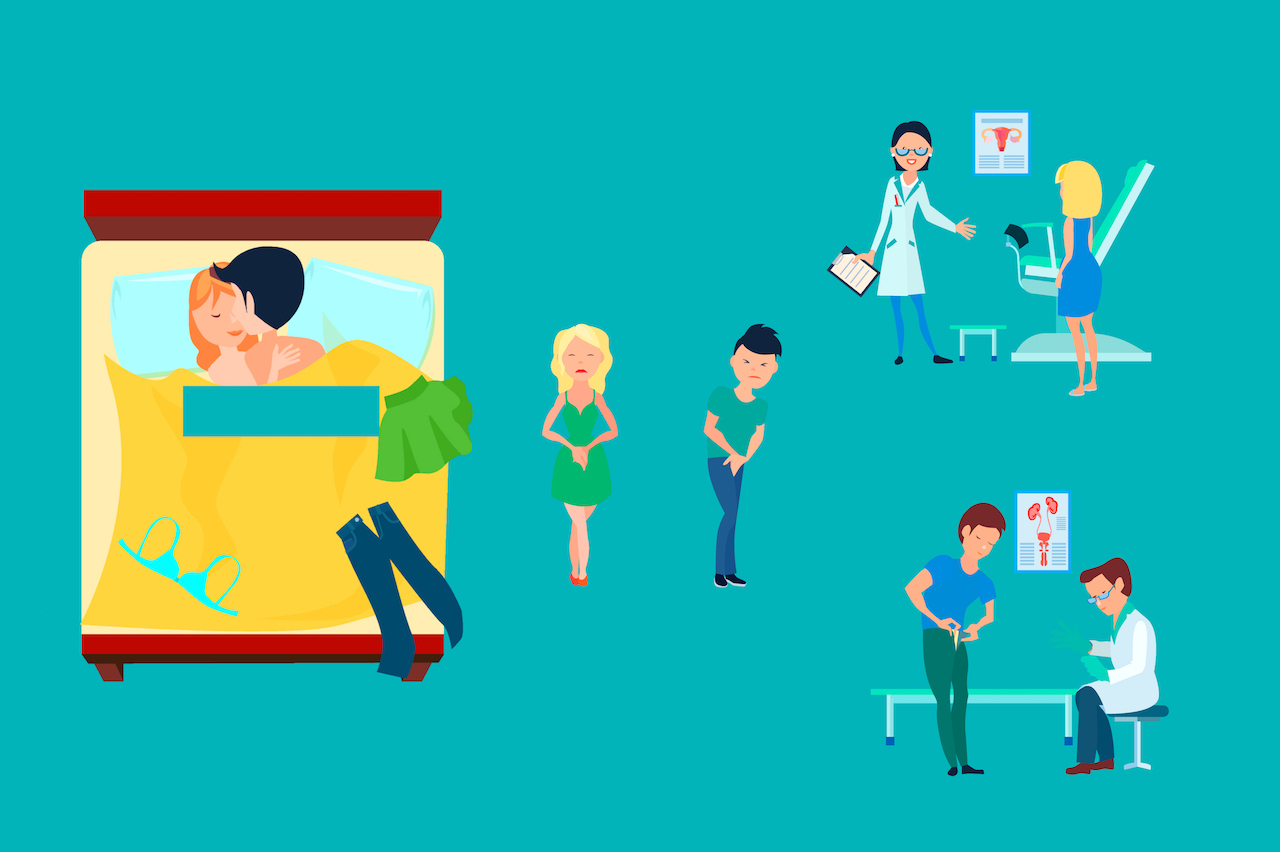Sexually transmitted diseases (STDs) spread from person to person during any sexual activity. A mother can even pass these on to her baby during pregnancy and birth. You must always, under all circumstances, practise safe sex! Use a new condom every single time you have sex. This applies to oral sex too.
According to the World Health Organization, more than a million sexually transmitted infections (STIs) are acquired every day, worldwide. The majority of STIs either have no symptoms or only mild symptoms that may not be recognised as an STI.
Sexually transmitted diseases are serious, and while some have symptoms, others don’t. Some can be cured, and others may be there for a lifetime. Some may even be life-threating.
Here’s what to look out for if you think you have an infection.
Gonorrhoea
Gonorrhoea is the most common STD. It affects the urethra (the tube that drains urine from the bladder in men and the vagina in women). It can also spread to other parts of the body, and increase the risk of septic arthritis (joint infection or infectious arthritis). It causes a contagious discharge that can infect the throat (oral sex), and rectum (rectal sex), and the eyes of a baby during birth.
Symptoms
- Smelly vaginal discharge.
- Itchiness or swelling of the vagina.
- Abdominal pain.
- Pain during sex.
- A burning sensation when urinating.
- A sore throat.
Treatment
Gonorrhoea is treated with antibiotics. See a doctor and get checked out if you’re experiencing any symptoms.
Herpes
Herpes is highly infectious. It’s known to be one of the most common STI amongst teenagers. As scary as it may be, it’s a virus like all other viruses. Once contracted, it stays in your body. There are two types of herpes that cause small, painful blisters:
Herpes simplex virus (HSV) Type 1: Usually causes cold sores around the mouth. It’s usually passed on through kissing (this is not a STI).
Herpes simplex virus (HSV) Type 2: This causes very painful genital ulcers/blisters/warts. It’s passed on through any sexual contact. This virus can be active in your body with no clear visible signs.
Symptoms
- Fever, headaches and swollen glands.
- Pain when urinating.
- Painful ulcers on the genitals.
Treatment
Herpes is diagnosed by identifying the blisters. It’s important to go for treatment. Sores are difficult to diagnose once they dry up, so if you experience any symptoms, see your doctor ASAP. In most cases your doctor may prescribe painkillers for the ulcers.
Chlamydia
Chlamydia is a symptomless STD caused by bacteria, which, if left untreated, can lead to pelvic inflammatory disease (PID). PID affects the pelvic region and can lead to infertility in both men and women.
Symptoms
Most people don’t show any symptoms at all, but look out for:
- Unusual vaginal discharge and/or bleeding especially after sex.
- Flu-like symptoms.
- Pain in your lower abdomen.
- Painful urination, and a feeling of not being able to delay urination.
Treatment
The best way to tell if you have chlamydia is to get tested. Chlamydia can be treated with antibiotics. Prevention is always better than cure, so see your doctor as soon as you notice worrying symptoms.
Syphilis
This sexually transmitted infection is caused by bacteria. It develops in stages and starts as a sore in the genitals, rectum or mouth. It can lead to a rash and later affect your organs. If left untreated, things could get very serious.
Symptoms
- Painless ulcers.
Treatment
Blood tests can figure out if you’ve been infected with syphilis. Antibiotics can help clear the infection. Recently though, bacteria have become resistant to antibiotics. This means that stronger types of antibiotics must be used; which could give you more serious side-effects. If you’re sexually active, it’s best to get tested every six months or in between new partners.
STIs are usually easy to treat. If left untreated, an infection could increase the risk of getting HIV and some may cause infertility. Have routine check-ups and, most importantly, always use protection.
References:
- https://www.webmd.com/sexual-conditions/features/could-you-have-std-not-know
- https://www.nhsinform.scot/illnesses-and-conditions/sexual-and-reproductive/sexually-transmitted-infections-stis
- https://www.mayoclinic.org/diseases-conditions/sexually-transmitted-diseases-stds/in-depth/std-symptoms/art-20047081
- http://www.who.int/news-room/fact-sheets/detail/sexually-transmitted-infections-(stis)

